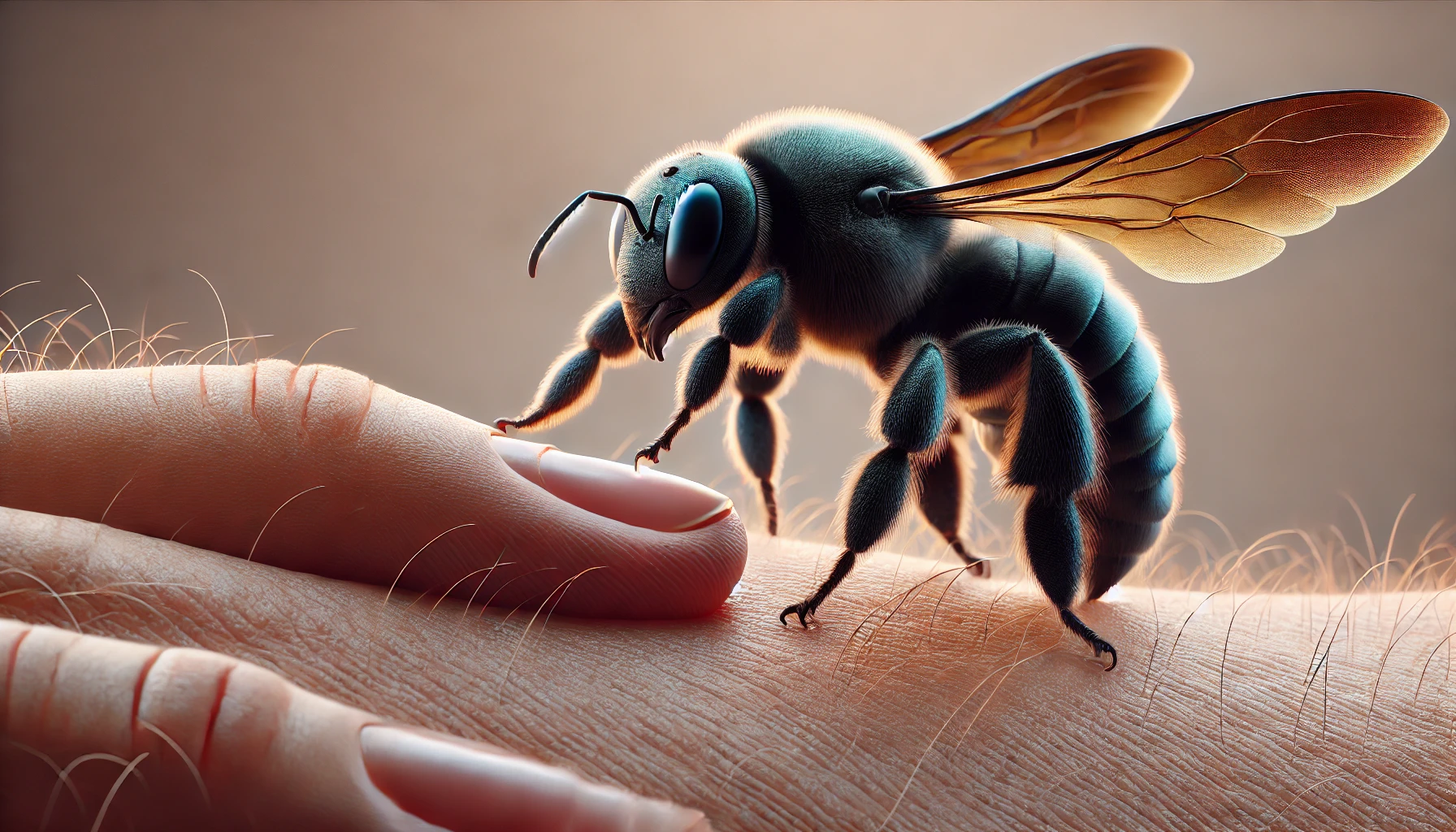This post was written with Consensus AI Academic Search Engine – please read our Disclaimer at the end of this article. Carpenter bee stings, while generally mild, can cause discomfort and, in rare cases, severe allergic reactions. Understanding the symptoms and appropriate first aid measures can help manage these stings effectively. Ongoing research into bee venom treatments, such as the AAV study, may pave the way for more targeted therapies in the future1.
By staying informed and prepared, individuals can minimize the impact of carpenter bee stings and enjoy the benefits these pollinators bring to the environment.
Carpenter bees, often mistaken for bumblebees, are large, solitary bees known for their wood-boring habits. While they play a crucial role in pollination, their stings can be a cause for concern. This article delves into the nature of carpenter bee stings, their effects, and how they compare to other bee stings.
Understanding Carpenter Bee Stings
Carpenter bees are generally non-aggressive and rarely sting unless provoked. Unlike honeybees, which lose their stinger and die after stinging, carpenter bees can sting multiple times. The sting of a carpenter bee is similar to that of other bees and wasps, causing pain, swelling, and redness at the site.
Symptoms of Carpenter Bee Stings
The symptoms of a carpenter bee sting are typically localized and include:
- Immediate sharp pain at the sting site
- Redness and swelling
- Itching and tenderness
In most cases, these symptoms are mild and subside within a few hours to a few days. However, some individuals may experience more severe reactions.
Severe Reactions and Allergies
While rare, some people may have allergic reactions to carpenter bee stings. Symptoms of a severe allergic reaction (anaphylaxis) include:
- Difficulty breathing
- Swelling of the face, lips, or throat
- Rapid pulse
- Dizziness or fainting
Immediate medical attention is required if any of these symptoms occur.
Treatment and First Aid
For most carpenter bee stings, basic first aid measures are sufficient:
- Clean the Area: Wash the sting site with soap and water to prevent infection.
- Apply Ice: Use an ice pack to reduce swelling and numb the pain.
- Pain Relief: Over-the-counter pain relievers like ibuprofen or acetaminophen can help manage pain.
- Antihistamines: Oral antihistamines can reduce itching and swelling.
For severe reactions, an epinephrine injection (EpiPen) may be necessary, and the individual should seek emergency medical care immediately.
Comparing Carpenter Bee Stings to Other Bee Stings
Research on bee stings, particularly those from Africanized honeybees, provides insights into the treatment and effects of bee venom. A study on the use of Africanized honeybee antivenom (AAV) demonstrated its safety and effectiveness in treating multiple stings, showing promising results in reducing venom levels and improving clinical outcomes1. While this study focused on honeybee stings, it highlights the potential for developing specific treatments for various bee stings, including those from carpenter bees.
Disclaimer
The content presented in this blog is generated by Consensus, an AI-powered academic search engine, and is based on publicly available scientific literature. While every effort is made to provide accurate, up-to-date, and well-researched information, the content is intended for informational and educational purposes only. It does not constitute medical advice, diagnosis, or treatment. Always consult a qualified healthcare professional before making any decisions regarding medical conditions, treatments, or medications. The AI system’s analysis may not cover all perspectives, emerging research, or individual cases, and it is not a substitute for professional expertise. Neither the blog publisher nor the developers of the AI-powered search engine are responsible for any actions taken based on the information provided in this content. Use of this information is at your own risk. Citations to the original scientific studies are included for reference, but these studies should be reviewed in full and interpreted with the guidance of a healthcare or research professional.
If you are experiencing a medical emergency, please seek immediate attention from a healthcare provider.
